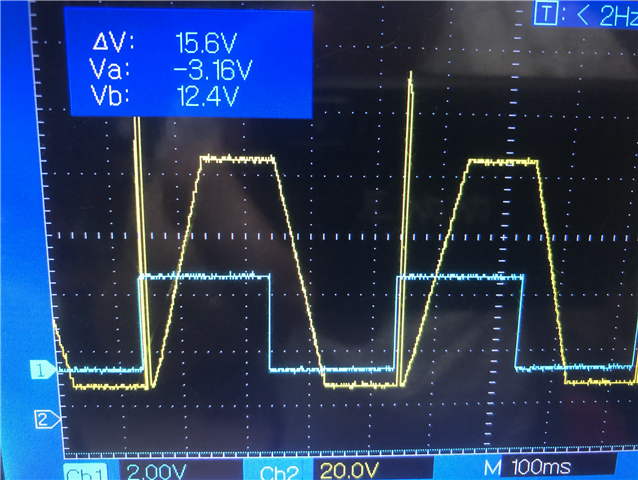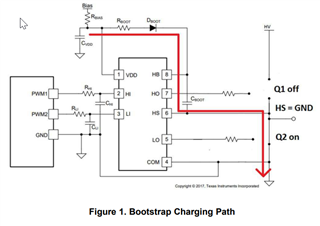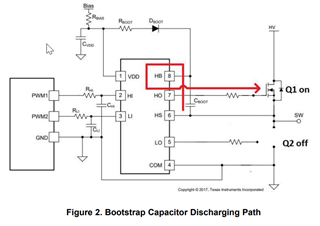Other Parts Discussed in Thread: OPA455, SN6501
Hello, TI Expert :
1.I am use UCC27212 to control the MOSFET on or off, but when I turn the high side MOSFET on, the HB PIN will occur pulse wave, I don’t what is happen. Can you help to analyze ?
2.I try to change C8 to 0.5uF the pulse wave still exist. Also change C7 to 1uF.
below is the schematic




